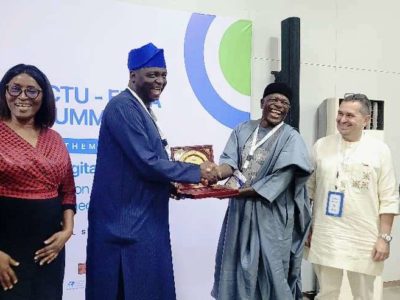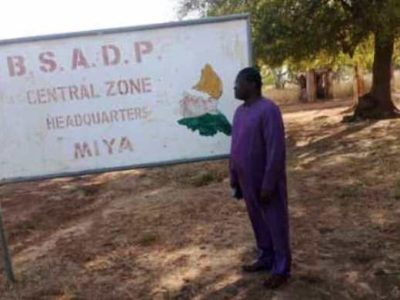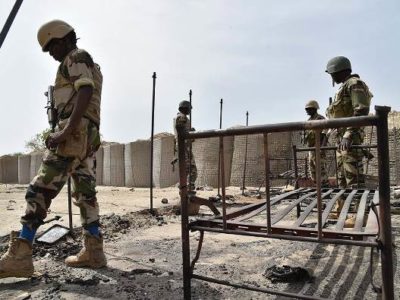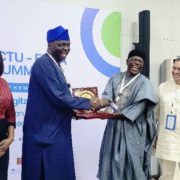
Amid the soft purr of the air conditioner and glinting LED screens, laboratory technicians inside a sprawling facility on the Kenyan coast peer into test tubes and pore through spreadsheets, hard at work to help propel Africa’s efforts to monitor and detect COVID-19 variants and boost pandemic response.
Genome sequencing at the laboratory in the Kenya Medical Research Institute in the coastal Kilifi town previously focused on research projects, sequencing about two dozen samples a week.
Then the pandemic struck.
Now serving five countries and part of the continent-wide 12 laboratory network set up to upscale the region’s pathogen surveillance through genome sequencing, the Kilifi laboratory sequences up to 200 samples weekly, although it has a capacity of up to 700.
Genome sequencing is central to combatting COVID-19, allowing governments and health authorities to take swift and informed public health decisions such as measures to bolster preparedness for potential surges owing to more infectious variants or stepping up vaccination, diagnostics and treatment.
“A genome sequence is like a fingerprint for the virus,” says Dr George Githinji, Team Lead of Genomic Surveillance at the Kenya Medical Research Institute in Kilifi. “From a sequence we learn about the history of the virus, which helps us understand transmission patterns and how to keep [COVID-19] from spreading.”
The laboratory has produced more than 8000 sequences since April 2020 from samples sent by Comoros, Eswatini, Ethiopia, Seychelles, Sudan as well as from within Kenya. A quarter of those samples were shipped in from the five countries within the sub-region.
World Health Organization (WHO) recommends that countries ship at least 5% of their COVID-19 samples to reference sequencing laboratory or continuously produce sequencing data if they have the capacity.
“The more sequences the better,” says Dr Nicksy Gumede-Moeletsi, Regional Virologist at WHO Regional Office for Africa. “Because the virus is always changing, it’s important that samples from all over the continent are sequenced regularly so we can understand SARS-CoV-2 as it evolves.”
It takes three days to go from sample to sequence at the Kilifi laboratory, but around two weeks to fully process samples sent from other countries and provide complete analysis. Sequencing is a detailed process and can also be costly, especially when samples are sent from abroad. Shipping alone can cost up to US$ 500 for each delivery. There are also a multitude of approvals needed before the deliveries can move forward.
“WHO acts as a broker, facilitating agreements, navigating customs, managing paperwork and organizing logistics,” says Dr Juliet Nabyonga, acting WHO Representative in Kenya. “Our teams work with governments and labs to speed up the administrative processes so that samples can arrive cold and intact.”
Dr Gumede-Moeletsi points out that sending samples from one country to another for sequencing is a “stop-gap solution,” adding that “ultimately, countries have to be able to sequence and analyse genomes without relying on outside support.”
African countries are making great strides towards self-sufficiency in genome sequencing. After receiving WHO training, Eswatini now sequences its own COVID-19 samples and no longer sends samples to Kenya. Comoros is about to follow suit after its laboratory technicians received training from WHO, which is also helping the country procure its own sequencing machine. With WHO support, the Kilifi laboratory is set to train laboratory technicians from Ethiopia and Tanzania.
Countries including Chad, Mauritius, Namibia and Zimbabwe which previously sent samples to regional reference laboratories outside their territories now have their own sequencing laboratories.
WHO has provided more than US$ 6.5 million to help African countries either increase existing sequencing capabilities or build new expertise. It has paid off. At the beginning of 2021, just 5000 sequences had been produced continent-wide. Now, African laboratories have generated genetic profiles of more than 93 000 samples of SARS-CoV-2.
“We have built capacity on analysis on bioinformatics. We can draw a lot of synergy and strength by focusing on pathogens of interest by building collaborations and supporting analysis,” says Dr Githinji. “It’s not just enough to know what’s circulating. You need the analysis to make the sequencing meaningful so it has an impact on policy.”
Genome sequencing can revolutionize public health and transform responses to other major health threats beyond COVID-19. Over the past two decades, genome sequencing has been pivotal in the efforts to tackle HIV, tuberculosis, Ebola, polio, measles, hepatitis B and C among others in Africa.


















